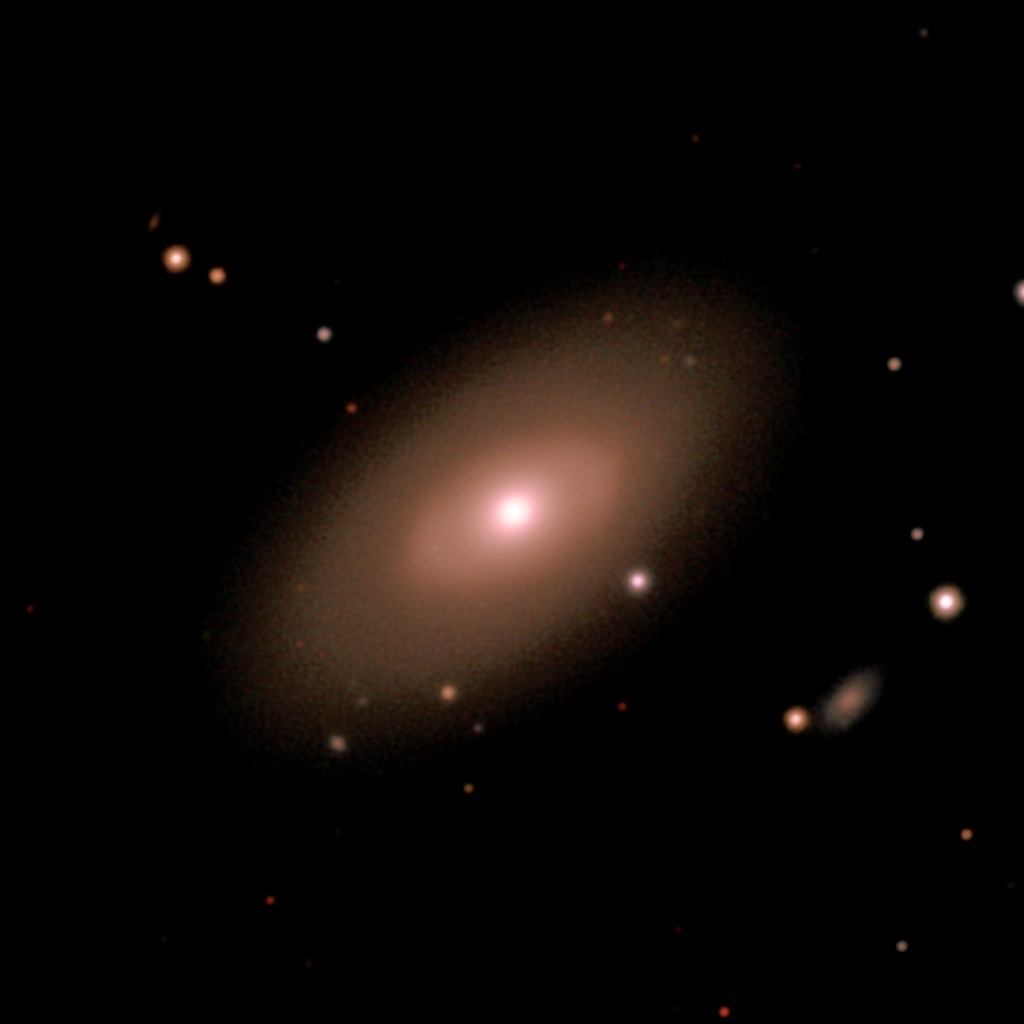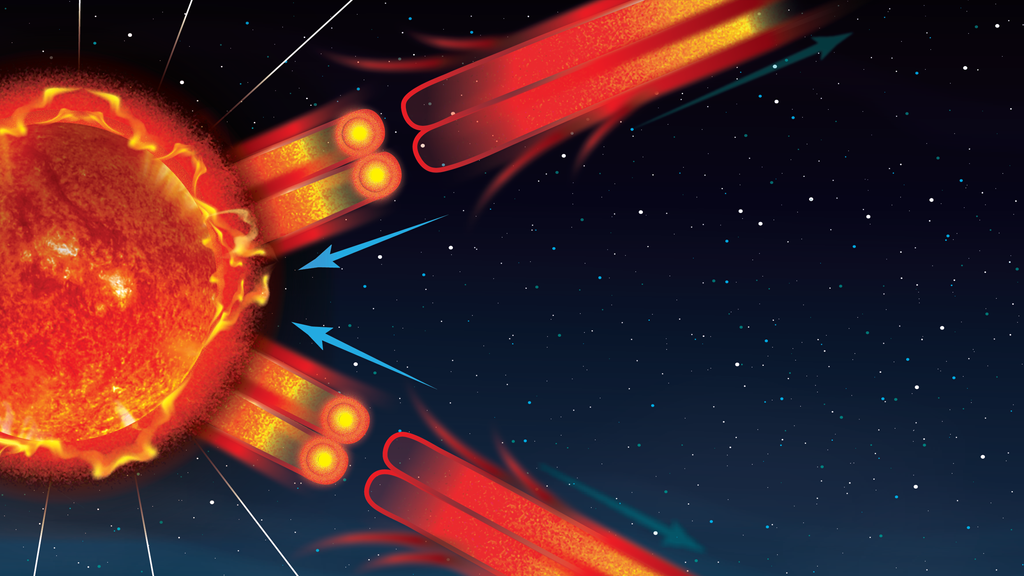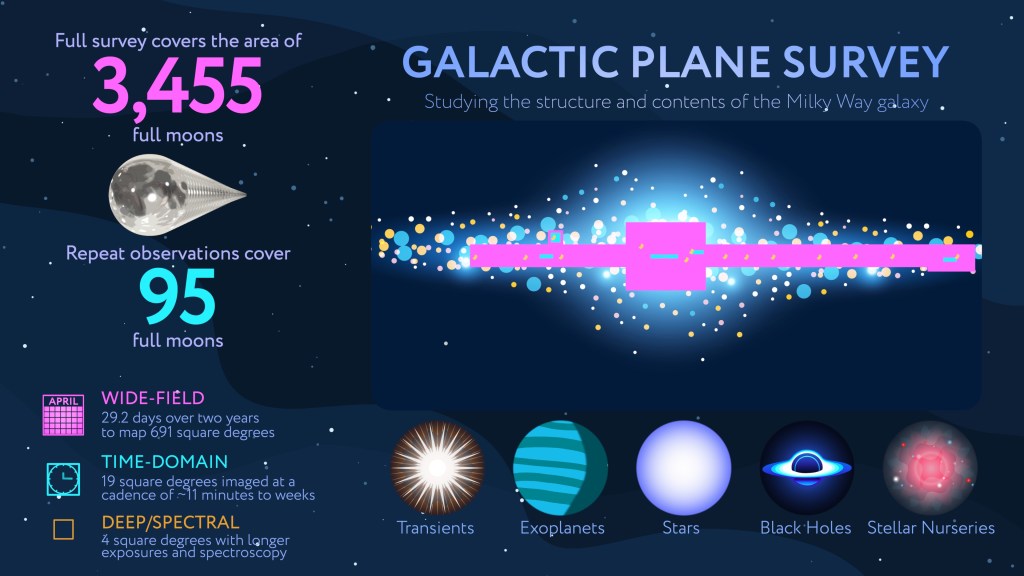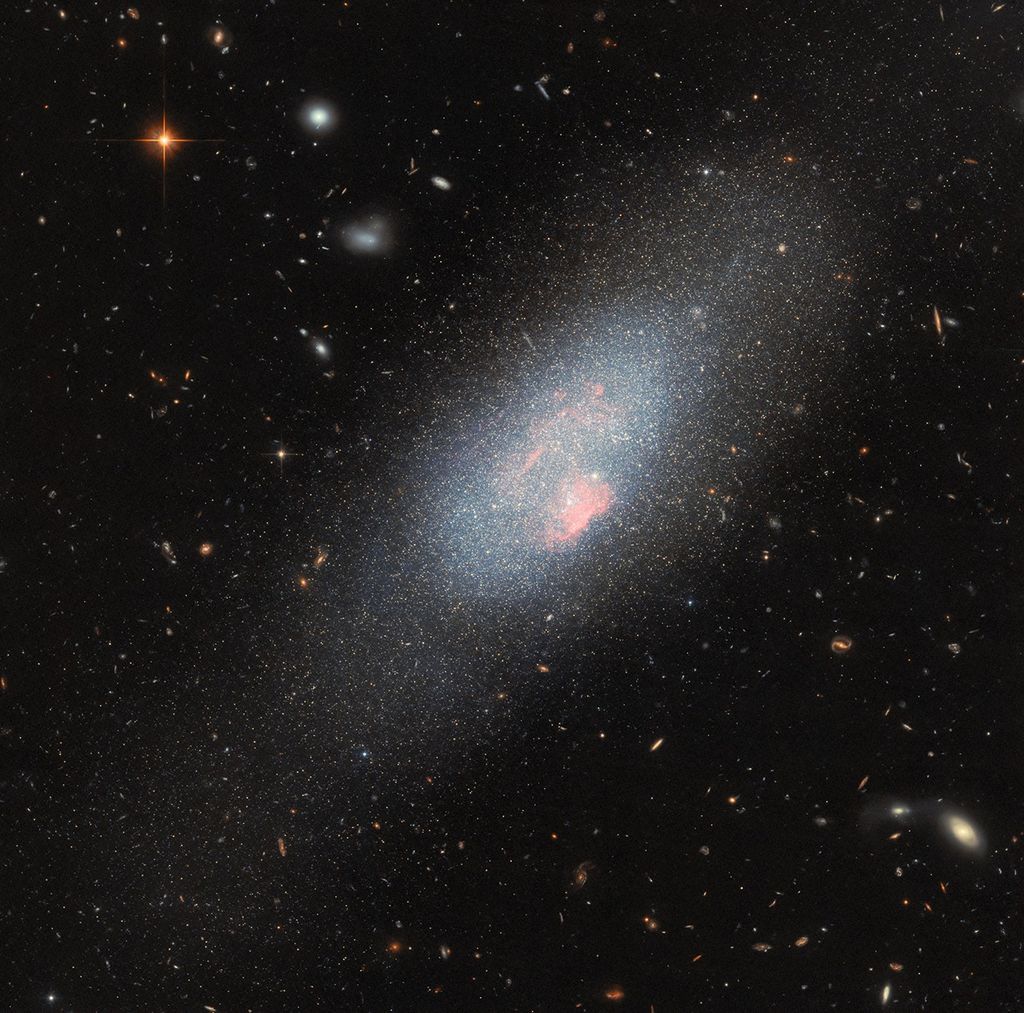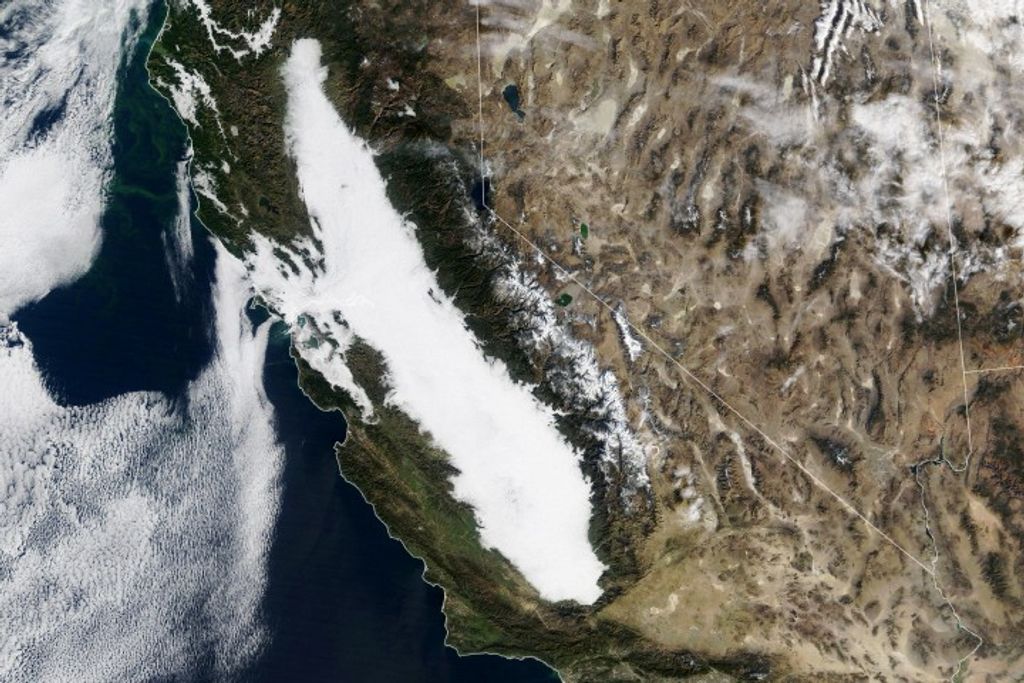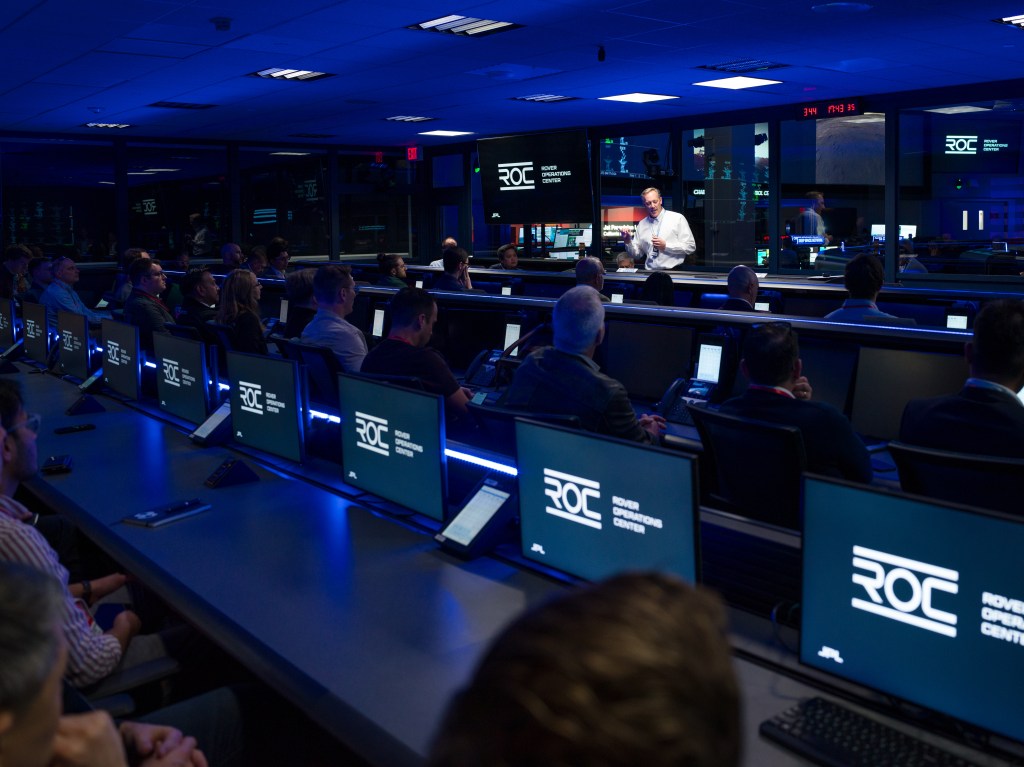1 min read
Galaxy NGC 4214: A Star-Formation Laboratory

The dwarf galaxy NGC 4214 is ablaze with young stars and gas clouds. Located around 10 million light-years away in the constellation of Canes Venatici (The Hunting Dogs), the galaxy's close proximity, combined with the wide variety of evolutionary stages among the stars, make it an ideal laboratory to research the triggers of star formation and evolution.
Intricate patterns of glowing hydrogen formed during the star-birthing process, cavities blown clear of gas by stellar winds, and bright stellar clusters of NGC 4214 can be seen in this optical and near-infrared image.
Observations of this dwarf galaxy have also revealed clusters of much older red supergiant stars. Additional older stars can be seen dotted all across the galaxy. The variety of stars at different stages in their evolution indicates that the recent and ongoing starburst periods are not the first, and the galaxy's abundant supply of hydrogen means that star formation will continue into the future.
This color image was taken using the Wide Field Camera 3 in December 2009.
About the Object
- R.A. PositionR.A. PositionRight ascension – analogous to longitude – is one component of an object's position.12h 15m 39.16s
- Dec. PositionDec. PositionDeclination – analogous to latitude – is one component of an object's position.36° 19' 36.8"
- ConstellationConstellationOne of 88 recognized regions of the celestial sphere in which the object appears.Canes Venatici
- DistanceDistanceThe physical distance from Earth to the astronomical object. Distances within our solar system are usually measured in Astronomical Units (AU). Distances between stars are usually measured in light-years. Interstellar distances can also be measured in parsecs.The distance to NGC 4214 is 10 million light-years (3.1 Mpc).
- DimensionsDimensionsThe physical size of the object or the apparent angle it subtends on the sky.The image is 1.3 arcminutes (3,700 light-years or 1,100 parsecs) wide.
About the Data
- Data DescriptionData DescriptionProposal: A description of the observations, their scientific justification, and the links to the data available in the science archive.
Science Team: The astronomers who planned the observations and analyzed the data. "PI" refers to the Principal Investigator.The image was created from Hubble data from proposal 11360 : R. O'Connell (University of Virginia), B. Balick (University of Washington), H. Bond (STScI), D. Calzetti (University of Massachusetts), M. Carollo (Swiss Federal Institute of Technology, Zurich), M. Disney (University of Wales, College of Cardiff), M. Dopita (Australian National University), J. Frogel (Ohio State University Research Foundation), D. Hall (University of Hawaii), J. Holtzman (New Mexico State University), P. McCarthy (Carnegie Institution of Washington), F. Paresce (European Southern Observatory, Germany), A. Saha (NOAO/AURA), J. Silk (University of Oxford), A. Walker (NOAO/CTIO), B. Whitmore (STScI), R. Windhorst (Arizona State University), and E. Young (University of Arizona).
The science team comprises: R. O'Connell (University of Virginia), M. Dopita (Australian National University), C. Kaleida (Arizona State University), and B. Whitmore (STScI). - InstrumentInstrumentThe science instrument used to produce the data.HST>WFC3/UVIS
- Exposure DatesExposure DatesThe date(s) that the telescope made its observations and the total exposure time.December 22-25, 2009, Exposure Time: 3.6 hours
- FiltersFiltersThe camera filters that were used in the science observations.F225W (UV), F336W (U), F438W (B), F487N (H-beta), F502N ([O III]), F547M (y), F657N (H-alpha+[N II]), and F814W (I)
- Object NameObject NameA name or catalog number that astronomers use to identify an astronomical object.NGC 4214
- Object DescriptionObject DescriptionThe type of astronomical object.Dwarf Galaxy with Bright Star-Forming Regions
- Release DateMay 12, 2011
- Science ReleaseGalaxy NGC 4214: A Star-Formation Laboratory
- Credit

This image is a composite of separate exposures acquired by the WFC3 instrument on HST. Several filters were used to sample broad and narrow wavelength ranges. The color results from assigning different hues (colors) to each monochromatic (grayscale) image associated with an individual filter. In this case, the assigned colors are: Blue: F225W (UV) + F336W (U) + F438W (B) + F487N (H-beta)Green: F502N ([O III]) + F547M (y), Red: F657N (H-alpha+[N II]) + F814W (I)
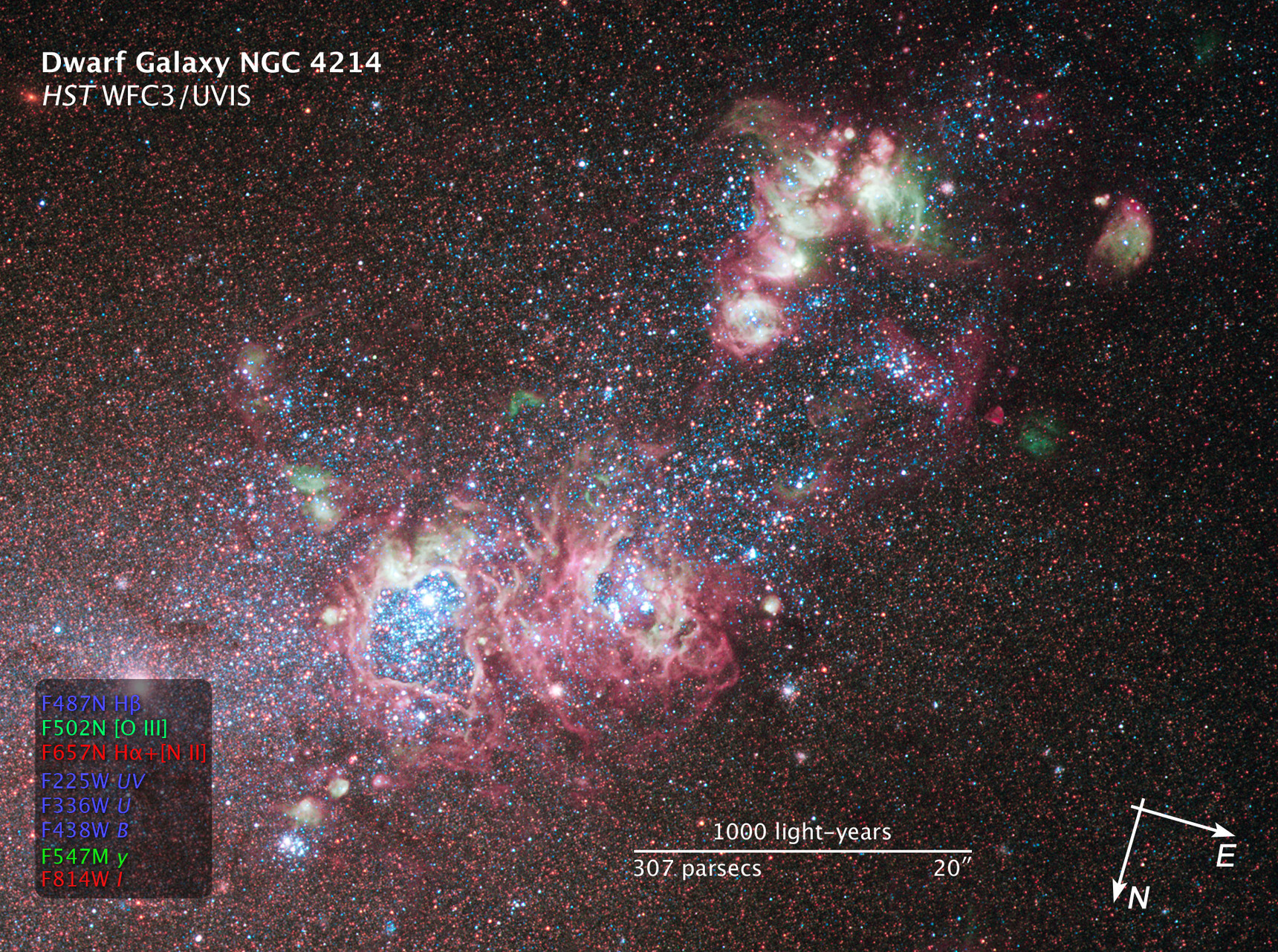
Related Images & Videos

Dwarf Irregular Galaxy NGC 4214 Imaged by Hubble WFC3
This is a full-field image of the nearby dwarf galaxy NGC 4214 taken with NASA's Hubble Space Telescope. Episodes of star formation are revealed as the galaxy continues to form clusters of new stars from its interstellar gas and dust. The Hubble image reveals a sequence of steps...
Share
Details
Claire Andreoli
NASA’s Goddard Space Flight Center
Greenbelt, Maryland
claire.andreoli@nasa.gov


